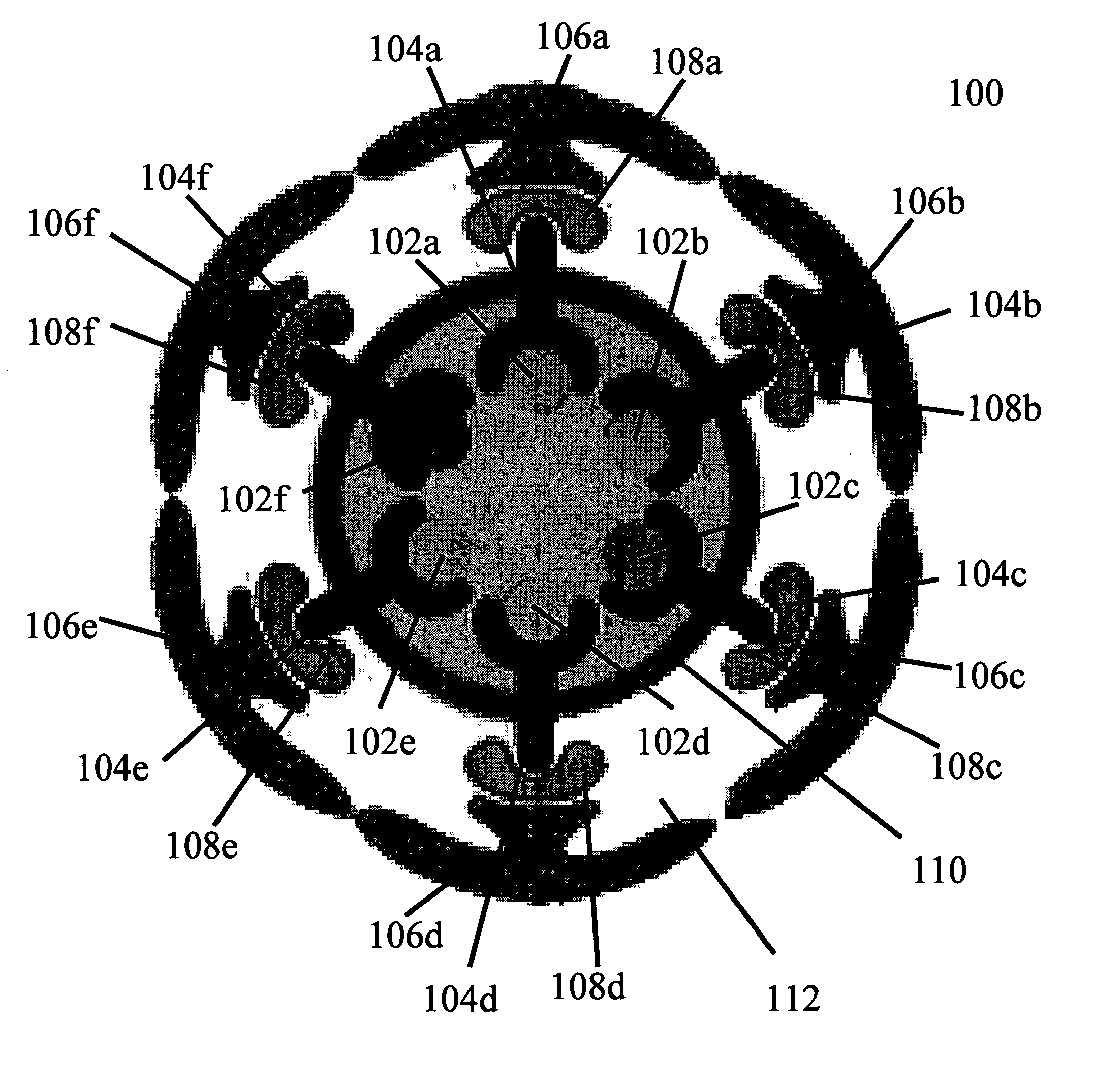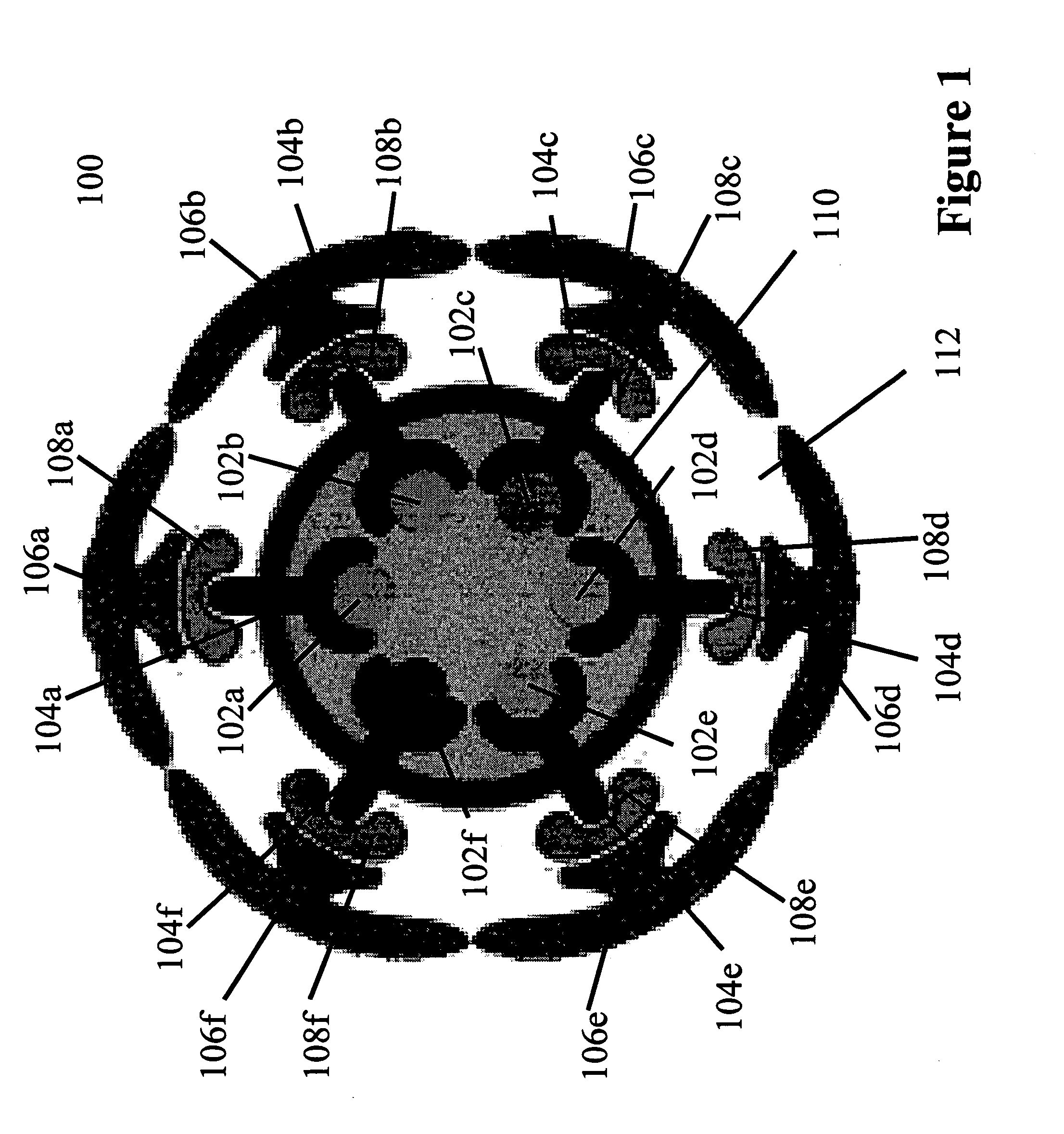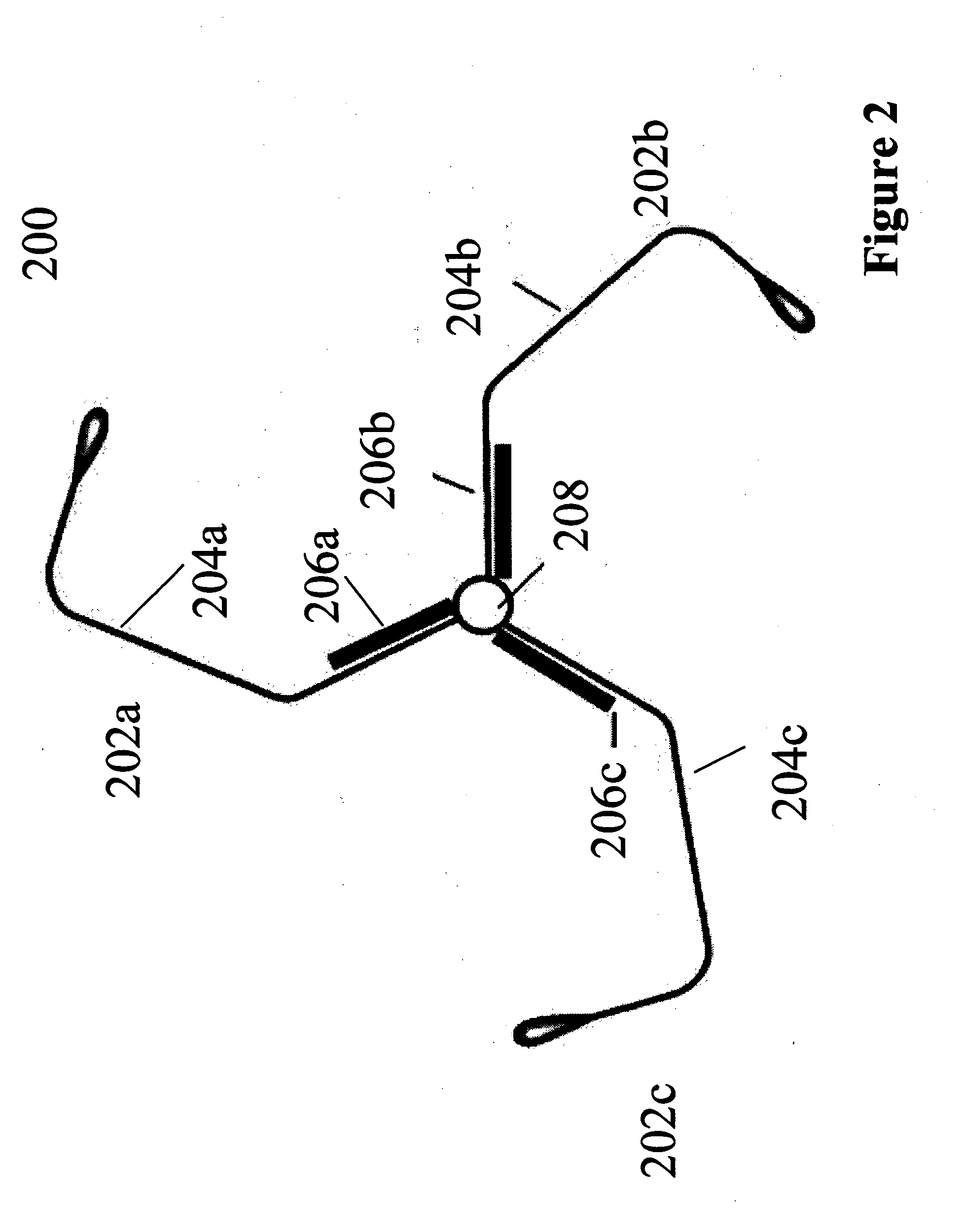Although promising, there are problems with C82 endohedral Fullerenes.
But studies of polyhydroxylated Gd@C82 in rats revealed a significant, and potentially harmful uptake of the material by the reticular endothelial
system, such as the
lung, liver, and
spleen.
According to the Unites States
Environmental Protection Agency (2003), which is funding research on nanoparticle
toxicity, there is a serious lack of information about the
human health and environmental implications of manufactured
nanomaterials, e.g., nanoparticles, nanotubes, nanowires,
Fullerene derivatives, and other nanoscale materials.
As the production of manufactured
nanomaterials increases and as products containing manufactured
nanomaterials are disposed of, these materials could have harmful effects as they move through the environment.
Forthcoming study results, including those funded by the EPA, may not be encouraging for pharmaceutical applications of Fullerenes like imaging contrast agents, because the
metal-containing agent must be excreted without long-term retention in tissues.
Another drawback of C82 endohedral Fullerenes is that they are difficult to make in large quantities and with high purity, which is necessary for pharmaceutical applications and non-medical applications, like nanoscale electrical circuits.
This very poor success rates also leads to high costs.
Metallofullerenes in the C60 family, such as Gd@C60, have not been seriously considered for pharmaceutical applications because its members are generally insoluble and air-sensitive.
However, this material may contain several different isomers, rendering it unfit for many applications.
Under these conditions, though, no more than one in 1,000
Fullerene cages ends up with a noble-gas atom inside, making large scale production infeasible, as well as very costly.
But all endohedral Fullerenes suffer from a severe cargo carrying limitation, as the
hollow core of the endohedral
Fullerene is only seven to eight angstroms in
diameter.
The modified cage or the new group on the outside will interact very strongly with the enclosed cargo in ways that aren't easy to describe or predict.
Endohedral Fullerene charge transfer and subsequent cage
distortion is unacceptable in commercial and medical applications because results will not be consistent and predictable, and may also be harmful and injurious in some circumstances, like
in vivo applications.
This cage
distortion drawback also potentially entails significant legal and medical liability issues.
The ability of endohedral Fullerenes to encapsulate various types of cargo is also limited.
Along with their limited cargo
carrying capacity; charge transfer to the cage; organ and tissue retention; extreme hydrophobicity; and their difficulty of manufacture and very high cost, their cargo type limitations further limit the commercial and scientific potential of endohedral Fullerene-based endohedrals, for example, in the fabrication of nanoscale electronic integrated circuits.
But NICE does not address the issues of limited cargo
carrying capacity of endohedral Fullerenes, which is limited to just one to three atoms.
Nor does NICE overcome the issues of tissue and organ retention of potentially toxic endohedral Fullerenes when used
in vivo, or the potentially harmful results of
environmental exposure to endohedral Fullerenes.
Nor does NICE overcome the extreme hydrophobicity of endohedral Fullerenes.
Finally, NICE, which fabricates endohedral Fullerenes carrying
metal cargo, does not fabricate Fullerenes that carry noble gases, and also does not overcome the fundamental cargo
material type limitations of endohedral Fullerenes.
Top down approaches can be
time consuming, expensive and exacting, and wasteful of materials if not performed correctly.
However, all of the foregoing biological cages, just like endohedral Fullerenes and others in the prior art, also suffer from various limitations that are unique to their various material compositions.
For example, developmental work on liposomes and lipid nanoparticles has been limited, due to their inherent problems such as low encapsulation efficiency, rapid leakage of water-soluble drugs in the presence of blood components, and poor storage stability.
Furthermore, studies have concluded that the use of liposomes is an inefficient method of
gene transfer for
gene therapy, which incorporates
functional genes into the
cell to replace the action of dysfunctional genes.
However, studies have concluded that the use of liposomes is an inefficient method of
gene transfer.
Not only is
plasmid size limited but gene loading is also poor: only one in every 100-10,000 liposomes contain intact
DNA.
This leads to excessive breakdown of the
DNA and results in poor
transfection efficiency.
Early polymers used were non-biodegradable and had to be surgically removed once its
drug had been released.
However, the wide majority of polymers erode by a combination of both mechanisms.
But they also create new classes of problems, and also do not overcome some existing ones, some of which issues are enumerated herein:
First, therapeutic agent models using
in vivo biodegradable polymer nanospheres, liposomes, lipids, and caspid delivery nanoparticles, as well as endohedral Fullerenes, and others in the prior art still consist of an
in vitro model being applied to an in vivo
system, and clinical
drug trials may show that promising
in vitro results do not positively transfer to in vivo environment, especially in humans.
This results in significant lost opportunity costs, as well as wastes large amounts of time, resources, and capital.
Second,
side effect profiles are not satisfactorily addressed by the foregoing in vivo targeted delivery systems and in the prior art, and side effects may in fact be exacerbated because a highly potent concentration of a therapeutic agent will be delivered to highly targeted areas of interest.
One possible consequence of in vivo targeted delivery systems is that dosing regimens, especially off-
label use, may have to be significantly recalibrated by health care givers, necessitating new training and learning.
Third, the ability to cross various biological barriers into the brain and CSF, for example, using surfactants, and to deliver in vivo targeted concentrations of both small and large molecule payloads past these barriers will raise a host of new issues concerning agent
efficacy, dosing and
side effect profiles.
As a consequence, individual patient factors such as
genotype,
phenotype, age, gender, ethnicity etc., may come into play more than ever, and these factors are not addressed by delivery systems in the prior art.
Furthermore, once biological barriers to the brain and the CSF are commonly breached—especially by large molecule payloads that heretofore were not possible to typically deliver—new short and or long-term biological effects may also come into play and create important biological changes at the inter-cellular and intra-
cellular level.
However, all the foregoing in vivo delivery systems and others in the prior art lack such an in vivo ability to intelligently monitor, control, react, and dynamically adjust cellular processes after delivery of their agent
payload to a target, as well as fail to take into account unique, individual patient factors.
Fourth, the materials comprising the foregoing delivery systems and others in the prior art are “dumb” materials.
Although they may necessarily follow the control laws that regulate in vivo
biochemical reactions and physiological processes, current in vivo delivery systems and others in the prior art do not feature or are not comprised of materials having the innate ability or characteristics to utilize and or leverage these control laws to intelligently respond to changing in vivo conditions.
For example, the materials of the foregoing delivery systems and others in the prior art do not manifest an in vivo capability or the intelligence to dynamically alter a prescribed course of agent delivery in the face of an unexpected biological and or
drug interaction, and in that sense, the
regulatory control laws actually work against these dumb delivery systems.
Fifth, all the foregoing in vivo delivery systems and others in the prior art, with the possible exception of Fullerenes, lack structural persistence.
Once the nanoparticles find their target and deliver their cargo, their job is finished and their various types of coatings rapidly disband, which means that the functionality of these various agent delivery systems and others in the prior art is severely
time constrained.
This temporal constraint represents a significant nanoparticle design limitation.
Sixth, the ability to have multiple targeting moieties and one or more types of agents, while possible, is not currently practical with all of the foregoing systems, including others in the prior art.
Seventh, precise, highly ordered placement of cargo elements with minimal inter-cargo spacings is not possible with any of the foregoing in vivo agent delivery systems and others in the prior art, which are basically hollow nanospheres with no internal structural elements except for the cargo they may be carrying.
Eighth, all current delivery systems and others in the prior art are limited to carrying cargo just within their cavities.
Currently, they have no capabilities for building aggregated complexes of self-assembled structures that dynamically bind together one or more elements, some of which may be heterogeneous and external to the nanoparticle, into complex systems having one or more external elements, cavities and
payload types.
Current in vivo delivery systems and others in the prior art therefore do not make possible the
assembly of sophisticated, complex nanostructures that fully
exploit all the manifold possibilities of targeted agent delivery.
Ninth, there is no provision or capability for
programming algorithmically-driven behaviors into the current targeted agent delivery systems and others in the prior art, with the possible exception of endohedral Fullerenes, and their capability for becoming smart, programmable and or self-directed systems to perform complex and sophisticated tasks in vivo is therefore severely limited, if not impossible.
 Login to View More
Login to View More 


